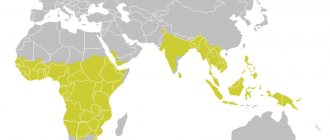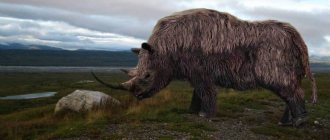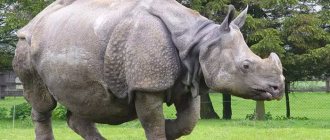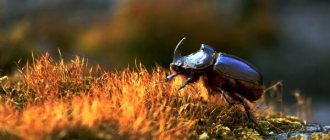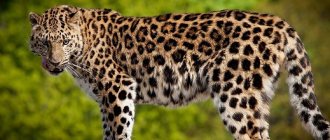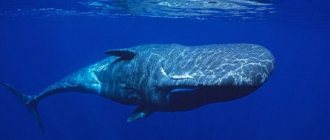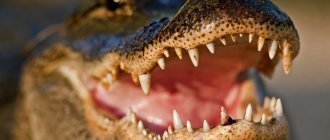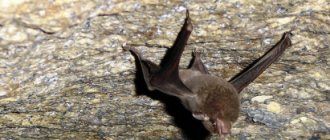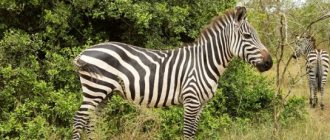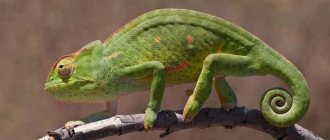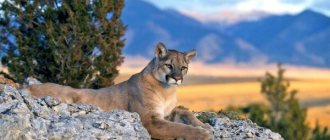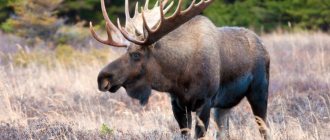Rhinoceroses are a family of large animals from the order of equids of the class of mammals. The first rhinoceroses appeared on the planet about 45 million years ago. They were distinguished by their gigantic size and the absence of growths on the head. The ancestors of rhinoceroses, whose appearance was as similar as possible to modern representatives of the family, appeared about 1.8-2 million years ago. The most studied of these is the woolly rhinoceros. He had some differences in physique and a dense coat, which appeared as a result of changing climatic conditions. A large number of mummified animal carcasses were found in the permafrost of northern Siberian Russia.
Until the end of the Ice Age about 12,000 years ago, there were only 5 species of rhinoceroses left on the planet.
Characteristics and description of the animal
Rhinoceroses lead a solitary lifestyle. Only females with cubs can form temporary small groups. Each animal occupies a certain territory, which it leaves only in case of food shortage. Rhinoceroses mark the boundaries of areas with excrement. Animals entering other people's lands may be attacked by the owner of the territory. But at a watering hole, rhinoceroses never show their aggressive nature either towards representatives of their own species, or towards other herbivores and even predators.
Peak activity of giant mammals occurs in the morning and evening. During the hottest hours, African rhinoceroses prefer to rest in the shade, while Asian species hide from the heat in the water. To protect their skin from sunburn and insect bites, animals periodically roll out in mud, which, when dried, forms a protective crust.
Rhinoceroses do not have acute vision and navigate mainly through hearing and smell. The running speed of massive and clumsy animals at first glance reaches 40-45 km/h.
What does it look like
Indian
appearance of rhinoceroses has the following characteristic features:
| Body | Massive, squat, on the neck there is a large fold of fat in the form of a hump. |
| Legs | Thick and short, ending in a wide foot formed by three toes with small hooves. |
| Head | Strongly elongated, on a short massive neck. Ears are long, mobile, eyes are small |
| Muzzle | Elongated, in the upper part there are growths resembling a horn. The shape, length and number of horns depend on the variety. |
| Tail | Short and thin, ending in a small tassel. |
How much does it weigh
Sumatran
The largest living rhinoceros is white. The weight of some adult males reaches 4 tons. The height of the animal is 1.8-2 m, and the body length is 4 m.
The sizes of other members of the family are noticeably smaller. Thus, the average weight of an Indian rhinoceros is 2 tons with a body length of 3 m. The smallest existing species is the Sumatran. His weight ranges from 800 to 1500 kg, height - 145 cm, body length - 235 cm.
The largest animal on Earth: the blue whale (Balaenoptera musculus)
In terms of size, the blue whale is not only the largest animal that lives on our planet today, but also the largest animal that has ever existed - representatives of this species reach a length of about 30 meters and weigh about 180 tons.
A blue whale's heart alone can weigh as much as a car, and their tongue weighs as much as an elephant. Newborn blue whales weigh around three tons, and the largest blue whale ever recorded weighed an astounding 190 tons!
Rhino species
Javanese
Rhinoceroses reached their greatest prosperity in the period from 20 to 5 million years ago. It was one of the most numerous families among equids. Science knows more than 60 genera of animals. Today, only 4 genera and 5 species of rhinoceroses are represented in the order. Let's look at them in more detail.
- Great Indian rhinoceros . The largest of the Asian species. It has one horn, the length of which rarely exceeds 30 cm. Indian rhinoceroses are characterized by increased aggressiveness; during skirmishes, they use not the horn as a weapon, but the lower incisors, delivering blows that cut the skin with them.
- Javan rhinoceros . Like the previous species, it belongs to the genus of Indian rhinoceroses. A relatively small animal with one horn. The length of the growth in males does not exceed 20 cm; in females it is either completely absent or barely noticeable. Today there are about 50-60 individuals left in their natural habitat. Despite all the efforts of environmental organizations, the species is on the verge of extinction.
- Sumatran rhinoceros . Due to its relatively small size, it is often called dwarf . It has two horns: the nasal one reaches 20-25 cm in length, the second is underdeveloped and barely noticeable. The main difference between the species is the presence of a significant amount of brown-red hair on the body.
- Black rhinoceros . African species, including 4 subspecies. One of them, the Cameroonian black rhinoceros , has been declared extinct since 2011. Black rhinoceroses can be two-horned or three-horned. The length of the largest nasal horn reaches 60 cm or more. The maximum recorded record is 138 cm.
- White rhinoceros . Has the longest nasal horn (record - 158 cm). It can be distinguished from a black rhinoceros by the vertical direction of its horn, flat upper lip, more elongated head and compact massive body. The species includes two subspecies, one of which is almost extinct.
The rhinoceros is a unique representative of the fauna of the world, massive and large in size. A kind of small armed and armored fortress that runs on four legs.
2.The rhinoceros is the second largest land animal after the elephant. The length of its body is on average 4 - 4.5 meters, height 1-2 meters, and weight 2-4 tons.
3. The white rhinoceros ranks second in the world as the largest animal. Its length is about 4.5 meters, and its height is 1.5-2 m. Its weight ranges from 2 to 5 tons. The black rhinoceros is slightly smaller than its counterpart, but is also impressive in size.
4. Now there are 5 species of rhinoceroses left on Earth: Indian, Javanese and Sumatran - in Asia, black and white - in Africa. All species of rhinoceroses are endangered and are listed in the Red Book.
5. The extinct species of rhinoceros Indricotherium is considered the largest mammal that once lived on the planet (reached up to 8 meters in height and weighed up to 20 tons).
Asian rhinoceroses
6. In Asian rhinoceroses, the skin forms deep folds, so it seems as if the animal is wearing a shell consisting of separate plates.
7. The closest relatives of rhinoceroses are tapirs, horses and zebras.
8. Black rhinoceroses have a peculiar upper lip adapted for grasping, which helps them easily grab leaves and branches.
9. Rhinoceroses are grazing animals, so their habitats are savannas and grasslands.
10.Depending on the species, as well as the environment in which rhinoceroses live in the wild or in captivity, they can live from 35 to 50 years.
Black rhinoceros
11.Black rhinoceroses eat more than 200 types of vegetation. He especially likes hard, thorny plants.
12.The rhinoceros has very thick skin - up to 1.5 centimeters thick. Despite the fact that the skin is very thick, it is quite sensitive to sunlight and insect bites. Rhinoceroses often roll in the mud to protect themselves from the scorching sun and annoying insects.
13. The Javan rhinoceros is the smallest - from 650 to 1000 kilograms.
14. Some species, for example, black and white rhinoceroses, have two horns, while other representatives of this family, for example, Javan rhinoceroses, have only one.
15. Female rhinoceros bear offspring for 15-16 months, so they can reproduce once every 2-3 years.
16.Sometimes female white rhinoceroses gather and live in groups.
17. The horn of these animals is not bone, as you might think when looking at it, but consists of a highly durable protein - keratin, found in our hair and nails.
18.Rhino horns are used in folk oriental medicine as a cure for fever and rheumatism. They are also used to make decorative items such as dagger handles.
19.Rhinoceroses have poor vision, so they cannot distinguish surrounding objects well, but thanks to a well-developed sense of smell and excellent hearing, they are remarkably oriented in space, and also sense the approach of an enemy from afar.
20.The main purpose of rhinoceros horns is to separate bushes and thickets in order to get food for themselves.
Sumatran rhinoceroses
21.The Sumatran rhinoceros lives in impenetrable forests and leads a reclusive lifestyle.
22.The closest relative of the Sumatran rhinoceros is the woolly rhinoceros, which became extinct in the 9th-14th centuries BC.
23. In 1948, in order to clear the territory of Kenya for agriculture, hunters with a license to shoot rhinoceroses were hired. Such 1 hunter killed 500 rhinoceroses in 1 day.
24. In the 70-80s of the 20th century, to protect the populations of the Indian rhinoceros in the Indian Kaziranga National Park, it was allowed to shoot to kill any armed person who was not an employee of the park.
25.The maximum speed at which a rhinoceros can run is 50 km/h.
Indian rhinoceros
26.The Indian rhinoceros differs from its African counterparts not only in its skin and long horns, but also in its love of water. In hot weather, Indian rhinoceroses go into the water and stay there until the heat subsides. African rhinoceroses do not resort to such cooling methods.
27. Rhinoceroses are predominantly nocturnal and feed only on plants. Animals can travel long distances in search of food.
28.To eat, a rhinoceros needs at least 70 kg of vegetation per day.
29.The Indian rhinoceros was used in military operations by Indian maharajas.
30. Baby rhinos are born without any horns.
31.Small redneck birds have a symbiotic relationship with rhinoceroses. They remove ticks from the surface of their skin and also warn rhinos of danger with loud screams. In the East African language of Swahili, these birds are called "askari wa kifaru", which means "protectors of rhinoceroses".
32.The horn of this animal is 1/3 of its length. And the largest horn was recorded to be 1 meter and 25 cm long.
33.The names “white” and “black” do not at all mean the real color of rhinoceroses. "White" is just a misunderstanding of the African word "weit", which means "wide" and describes the wide mouth of this rhinoceros. Another type of rhinoceros was called "black" to somehow distinguish it from the white one, or perhaps because this rhinoceros likes to roll in dark mud to protect its skin and appears darker.
34.The largest population of white rhinoceroses lives in South Africa, small populations can also be found in Zimbabwe, Namibia and Botswana, as well as neighboring countries.
35.Black rhinoceroses live in the south and west of the African continent, mainly in Tanzania, Kenya, Zimbabwe and South Africa.
photo from the Internet
How many years do they live
White
Under natural conditions, the life expectancy of rhinoceroses is 35-50 years. The Indian rhinoceros has the shortest life span, while the white rhinoceros has the longest life cycle.
Almost all individuals that do not become victims of lions, tigers, cheetahs or crocodiles in the first 2-3 years of life survive to adulthood due to the almost complete absence of enemies. An adult rhinoceros in nature can only die in a clash with an elephant, but such cases are very rare. The main cause of premature death of animals is poaching.
Real giants: 23 largest animals in the world (guess who's the biggest)
List of the longest and heaviest inhabitants of land and seas.
Photo by Rudolf Kirchner, pexels
Fauna comes in all shapes, sizes, and types, so when trying to identify the largest animals on the planet, it's important to be specific about how we define "biggest" and what types we're looking at.
Are we talking about the tallest, longest and heaviest of all animals? Or do we decide to focus specifically on the largest land creatures, the largest modern inhabitants of the Earth, or include in the list of all the largest animals that ever lived on the planet, mentioning dinosaurs?
Where do they live?
The historical habitat of rhinoceroses extended to almost the entire African continent and most of Asia. Over the past decades, due to the expansion of agricultural land and poaching of animals, it has decreased significantly.
Currently, rhinoceroses are found only in the east and south of the African continent. Small local populations are found in the central and western parts of the continent. In Asia, rhinoceroses live in Pakistan, eastern India, Nepal, the Malay Peninsula, and the islands of Kalimantan and Sumatra.
Where live
The habitat of rhinoceroses depends directly on the species. Thus, African species prefer savannas and other dry landscapes. Asian rhinoceroses live in lowland and mountainous forests, in tropical forests, choosing wet and swampy areas.
CAMEL
How fast does the White Rhino run?
For such a large species, the white rhinoceros has incredible acceleration and can reach speeds in excess of 30 miles per hour (about 48 kilometers per hour). For comparison, the fastest man in the world was Usain Bolt, who clocked up to 27 mph! The top speed of white rhinoceroses also exceeds that of other large African land mammals such as elephants or hippopotamuses . Why do rhinoceroses attack? This species has developed excellent hearing and sense of smell, but its vision is reported to be very poor and myopic. Running allows rhinos to protect themselves from unfamiliar objects. This can be very common from mothers protecting their calves and males protecting their territory.
What do they eat?
Rhinoceroses are herbivorous mammals. Their diet consists of grass, leaves of trees and shrubs, roots and bark. Rhinoceroses eat aquatic vegetation growing along the banks and in reservoirs. Every day they need to absorb 50-70 kg of green mass.
Since the habitat of rhinoceroses is not rich in succulent grasses, the stomach of these animals is adapted to digesting dry and tough vegetation.
White rhinoceros horn size
The white rhino's horn can grow to the largest size of any rhino species. In 2006, Dr. Nico van Stein measured a 150 cm (59 in) white rhino horn! The larger of the white rhinoceros's two horns is usually about 90 cm (35 in) long, while the second horn is smaller and usually does not exceed 60 cm (24 in). Unlike other species, whose horns are attached to their skull, rhinoceros horns are made of keratin, a material you also find in your fingernails! This also means that if a rhino's horns are cut off, they can grow back in about three years.
How do they reproduce?
Sexual maturity in rhinoceroses occurs at the age of 4-5 years. Females look for partners for mating immediately after maturation, and males first take part in mating games at 6-7 years of age.
The breeding season in rhinoceroses is not tied to a specific time of year: every 1.5-2 months, females are ready for fertilization, which is communicated to males with sharply smelling marks. Before conception occurs, the female spends several days looking closely at the applicant. After the end of the mating season, the couple disperses, returning to their territories.
Pregnancy in rhinoceroses lasts about 460 days, after which one calf is born. The baby gets on his feet almost immediately after birth. A few hours later he is ready to follow his mother.
The lactation period for female rhinoceroses lasts up to a year. One-year-old cubs do not leave their mother and remain with her until new offspring appear.
One female can give birth to no more than 8 cubs in her entire life. In this regard, the rhino population is recovering quite slowly and any sharp decline in numbers can lead to irreversible consequences.
MONKEY
The largest land animal in the world by weight: African savannah elephant (Loxodonta africana)
The largest land-dwelling animal is the African savannah elephant, which can grow up to 4.5 meters in height, reach six meters in length and weigh up to 6,000 kg.
These huge beasts are currently listed as a vulnerable or endangered species on the International Union for Conservation of Nature (IUCN) Red List.
Source
Population and species status
Black
All modern species of rhinoceroses are listed in the International Red Book as vulnerable and critically endangered species. The catastrophic decline in the number of animals is caused by poaching. Rhinoceroses are killed not for their meat, but for their horns. In many Asian countries they are used in alternative medicine to make medicines for almost all diseases. Despite the fact that there is still no scientific evidence of this fact, the international trade in rhino horn is thriving. Economic recovery in some Asian countries has led to increased demand and increased hunting of animals. The cost of a large horn on the black market can reach 220 thousand dollars.
In 2022, for the first time, a rhinoceros was killed not in the wild, but in the French zoo of Thoiry for the sake of extracting valuable raw materials. Many national parks and zoos now trim the antlers of adults to make them unattractive to poachers.
Today, in some African countries, the idea of legalizing the trade in rhino horns is being actively discussed. In this case, growths cut from live animals will end up on the market. The initiators of the idea believe that in this way it will be possible to satisfy the demand for medicinal raw materials and avoid the complete destruction of rhinoceroses.
How many white rhinos are left?
Northern white
The species has two local populations in the center and south of the African continent. The subspecies found in the south is called the southern white rhinoceros. According to available information, the size of the southern population is 17-18 thousand individuals.
The northern white rhinoceros, which lived in the center of Africa, has been practically exterminated. The unstable political situation and wars in the animal’s habitat have led to the uncontrolled shooting of rhinoceroses and a sharp reduction in the population. If in the middle of the last century the number of the northern subspecies was in the range of 2000-2200 individuals, then at the beginning of the 21st century it decreased to 30 individuals. Currently, the last two females of the subspecies live in captivity. Scientists are attempting to revive the endangered species by artificially inseminating females.
KOALA
Number of rhinoceroses in the wild
Today the population is about 4 thousand individuals in the world. Black rhinoceroses are found only in national parks; in other places, poachers mercilessly exterminate them. People believe that the horns of these animals have healing properties, but this opinion is not true.
In South Africa, black rhinoceroses can be hunted, but only with the appropriate license. There are plenty of people who want to kill this strong beast, since its skin is considered a valuable trophy. Hunters are not even stopped by the high cost of the right to kill unique black rhinoceroses.
If you find an error, please select a piece of text and press Ctrl+Enter.
Interesting facts about rhinoceroses
- Next to rhinoceroses you can definitely find small birds with a red beak - cowbirds, or buffalo birds (they should not be confused with cowbirds living in America). Voloklui spend most of the day on the body of a mammal in search of various parasites and their larvae. Birds not only clean the animal’s skin, but also warn it with loud cries about approaching danger.
- Rhinoceroses have such poor vision that they can no longer distinguish objects at a distance of more than 30 m.
- September 22 is World Rhino Day. It was first held in 2010 on the initiative of the Wildlife Fund.
- One of the most common myths about rhinoceroses is that the animals extinguish fires by trampling them under their feet. Most likely, the appearance of the legend is associated with a scene from the comedy “The Gods Must Be Crazy,” where an animal extinguishes a fire built in the savannah.
- The skin of a rhinoceros is about 7 cm thick. It contains many glands necessary for metabolism and thermoregulation. The upper layer of the epidermis forms folds over the entire surface of the body. Asian rhinoceroses have additional long and deep folds on their back, neck and paws, which gives the impression that the animal is wearing a shell.
- The rhinoceros horn is not part of the skeleton and has no blood vessels or nerve endings. It is formed from keratin, a protein that is part of human nails and hair.
Features of character and lifestyle
Photo: White rhinoceroses
At first glance, the rhinoceros may seem slow and clumsy due to its size, but if necessary, it can accelerate quite quickly and run some distance at a speed of about 40 km/h. Of course, he won’t be able to maintain high speed for a long time, but it looks very intimidating.
Rhinoceroses spend their days alone in their territories, which they choose once and for all their lives. Only very rarely can it happen that a lack of food will force a rhinoceros to look for new lands.
It is also very rare that rhinoceroses can unite in small groups, usually a species of white rhinoceros, but mostly live alone. The mother, having taught the cubs the basic things of life, drives him out of her territory and again remains alone.
The rhinoceros is primarily a nocturnal animal. They can devour vegetation all night long and sleep in the mud or pond during the day. Some species prefer to be active both during the day and at night. Although rhinoceroses have very thick skin, it can also dry out and burn in the sun, and they are also tormented by insects.
Rhinoceroses are helped to fight insects by birds that literally settle on their backs. These are wolves and buffalo starlings. They not only feed on insects and ticks from the back of the animal, but can also indicate danger. According to some reports, insects from the back of a rhinoceros are eaten not only by birds, but also by turtles, who are just waiting for the rhinoceros to sit in their puddle.
In general, rhinoceroses coexist peacefully with all other species of animals: zebras, giraffes, elephants, antelopes, buffaloes and even predators that are of little interest to adult rhinoceros. For this reason, rhinoceroses sleep very soundly and do not think about danger at all. At this moment, you can easily sneak up on them and remain unnoticed.
Interesting fact: If a rhinoceros senses danger, it will most likely rush to attack first. Therefore, this animal is dangerous for humans. Moreover, the most dangerous thing is a female with a cub - she will be very aggressive precisely because she will protect her baby with all her might.
White Rhino Habitat
White rhinoceroses are one of two species of rhinoceroses that live throughout Africa. Their preferred habitat is large grasslands, although increasingly their populations are concentrated in nature reserves where they can be protected. The white rhinoceros's northern range once spanned South Sudan, the Democratic Republic of Congo, the Central African Republic and Uganda. However, poaching has sharply reduced the range of northern white rhinos. Today, northern white rhinoceroses are extinct in the wild, except for two remaining females, which were introduced to the Ol Pajeta Conservancy in Kenya. The southern white rhinoceros historically ranged from South Africa to Botswana, Namibia, Zimbabwe and other neighboring countries. Today, their populations are concentrated in a number of national parks, such as the Kruger National Park, where an estimated 8,000 to 9,000 white rhinoceroses live in one nature reserve.
Nutrition
It’s hard to believe, but the giant beast doesn’t need meat at all to feed itself. Their diet consists only of plant foods. Moreover, white rhinoceroses eat grass to a greater extent, because their lips are folded this way - the upper one is long and flat.
That's why they nibble on greens like cows. But in black rhinoceroses, the upper lip is narrowed and pointed, and with its help, the animal easily tears leaves from branches.
African animals tear off small bushes and huge thickets of even thorny grass straight from the roots and chew them without difficulty. And there were cases when rhinoceroses wandered into farmer’s plantations, then a real disaster happened because they ate everything that could be eaten, trampled down the rest, leaving whole ruts behind.
Female black rhinoceros (Diceros bicornis) with two-day old calf
To saturate the body, the animal needs to eat at least seventy kilograms of grass. They have such strong stomachs that even when they ate poisonous milkweed, it did not in any way affect the health of the animal.
Water also plays an important role in the body of a hero. In hot weather, he needs to drink more than one hundred and fifty liters of fluid per day. rhinoceros animal must drink at least fifty liters of water
